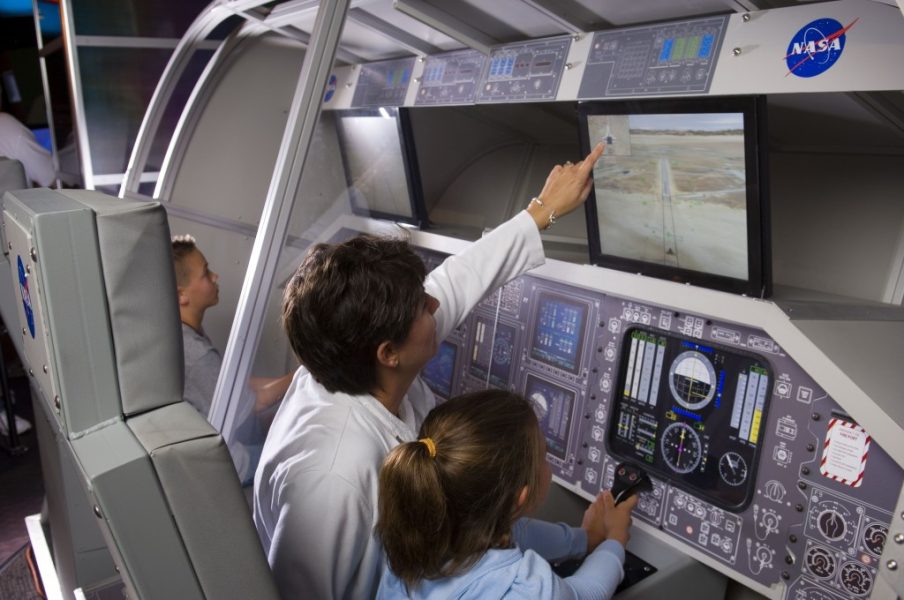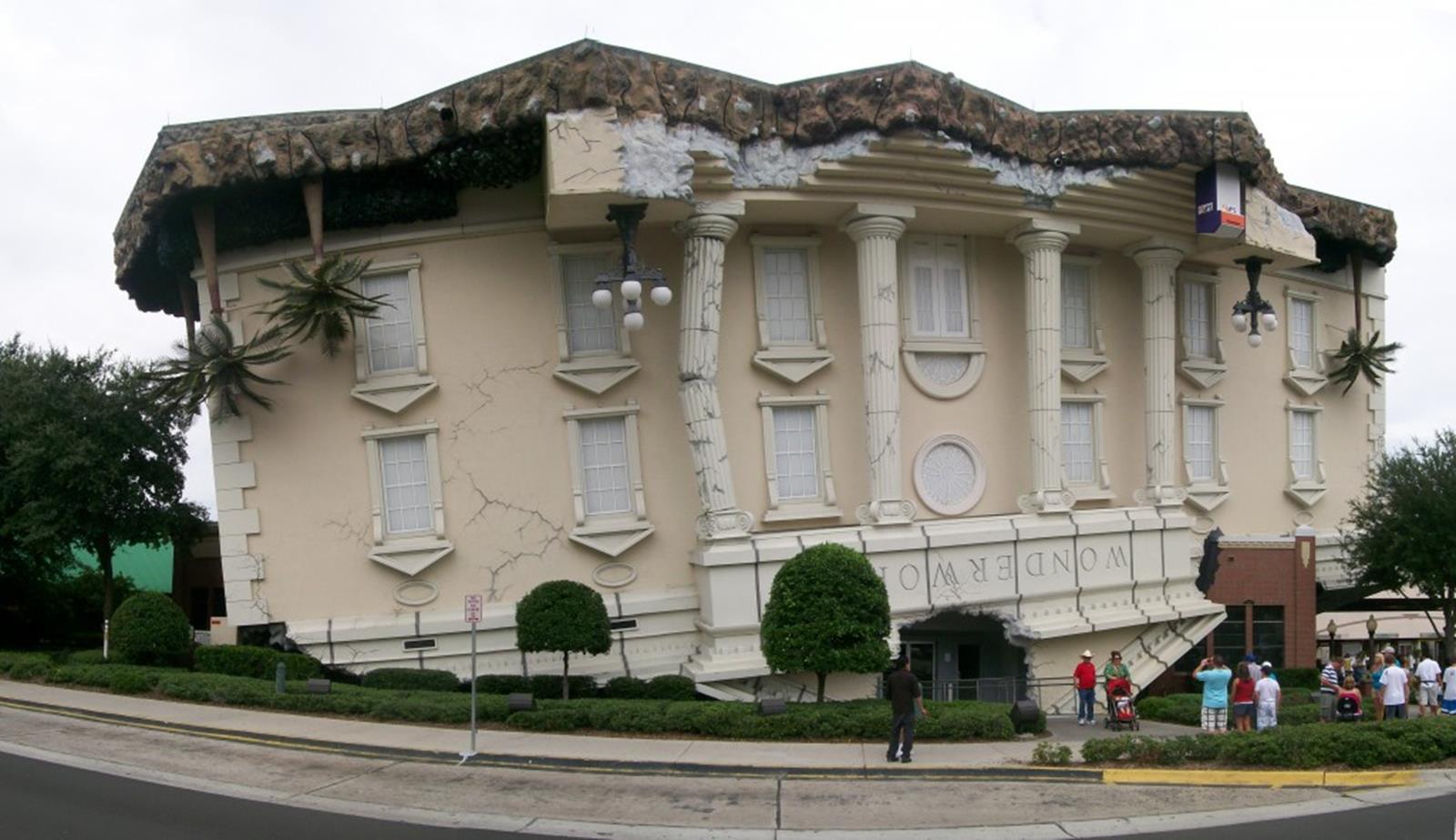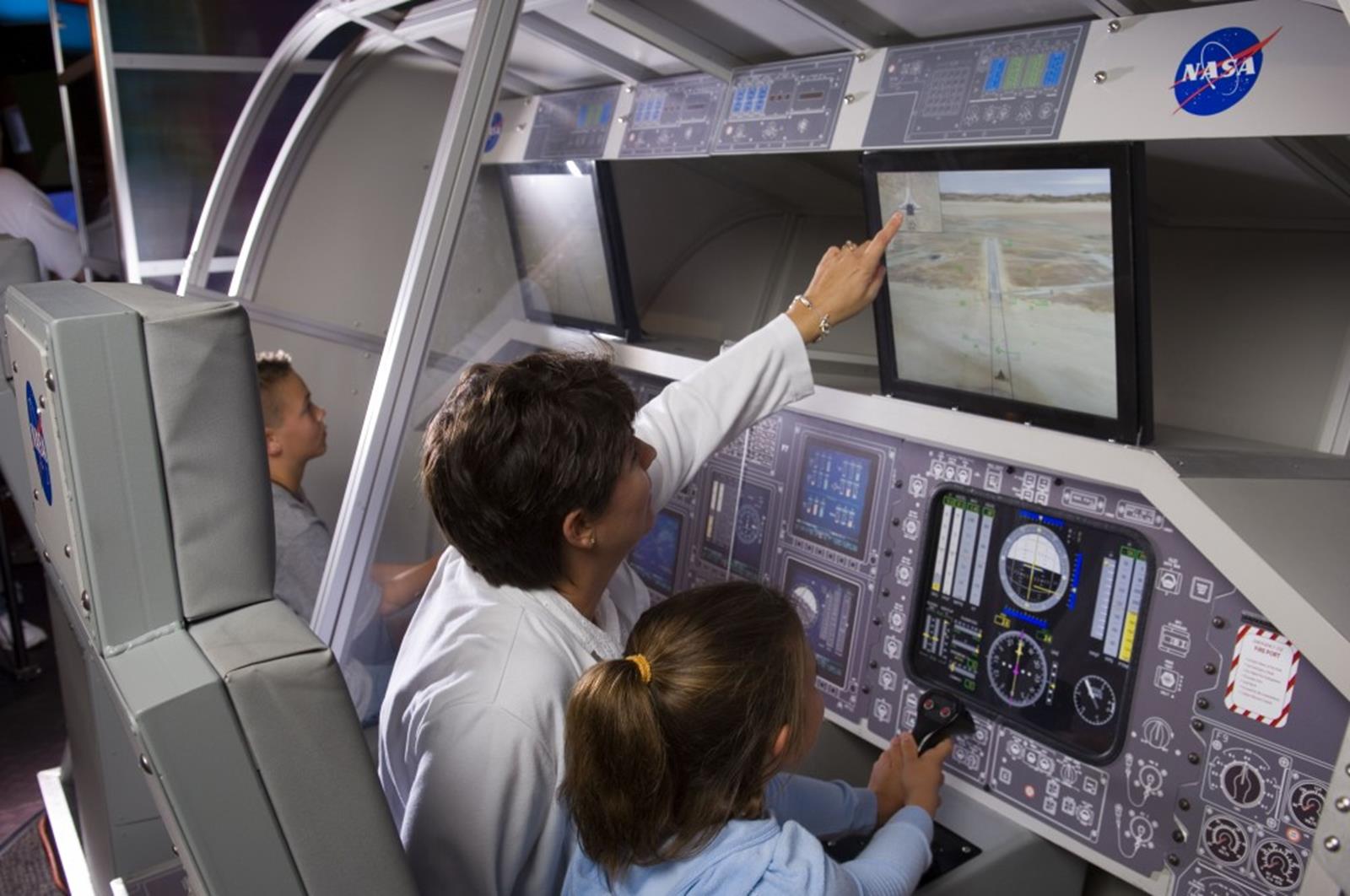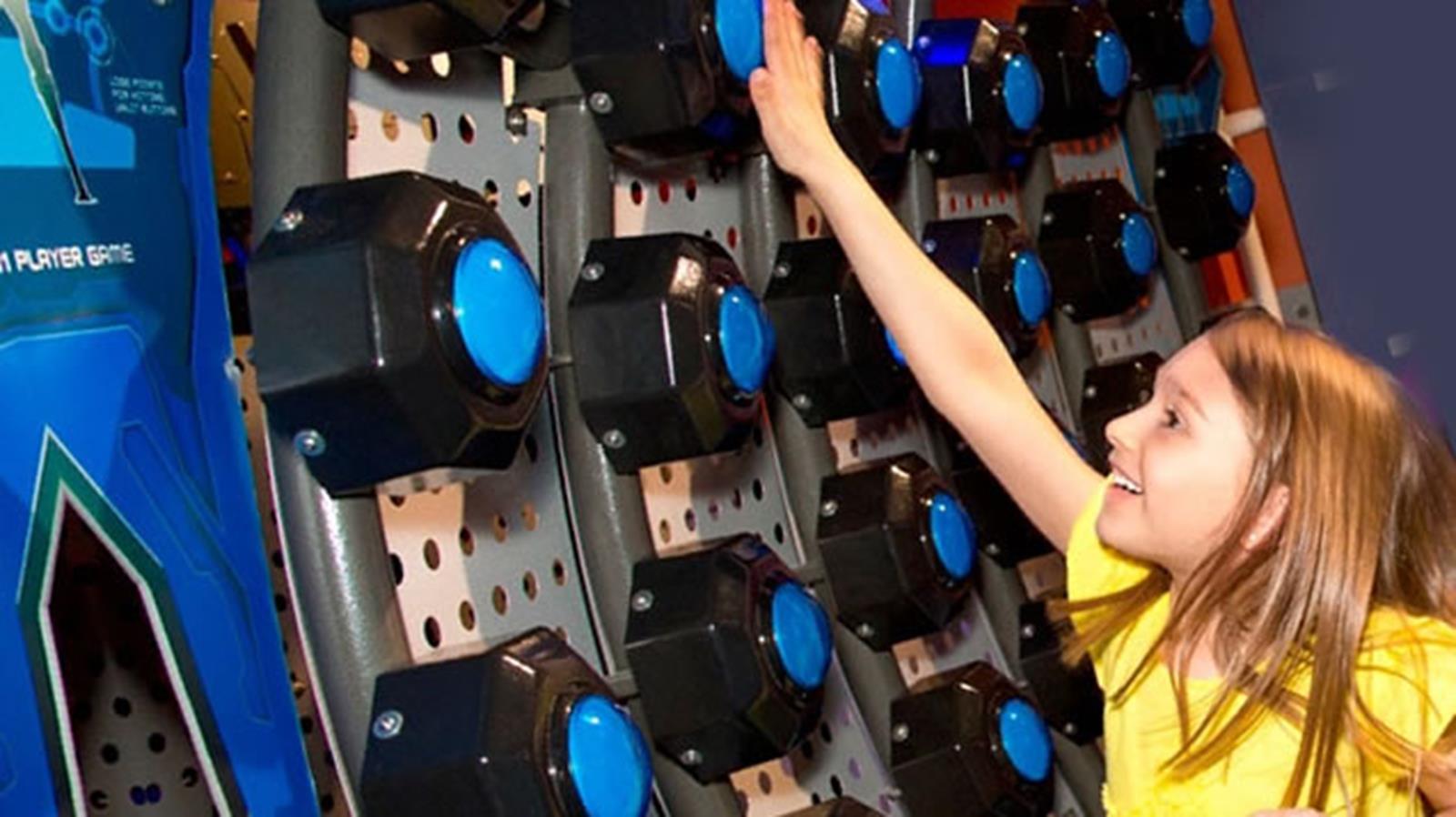Your student travel group will be able to spot a WonderWorks building when they see it. For a start, it’s upside down.
According to the fanciful ‘legend’ on the website, each WonderWorks location originated as a top-secret research lab in the Bermuda Triangle. An experiment went wrong, a vortex formed and the building was flung to its present location – with the basement now serving as the top floor, but with all exhibits intact!
There are five WonderWorks locations –Orlando and Panama City Beach, Florida; Pigeon Forge, Tennessee; Myrtle Beach, South Carolina; and Syracuse, New York. A sixth Wonderworks-branded location is found in West Nyack, New York (approximately 25 miles from Manhattan). This venue currently houses a pair of ropes courses – Sky Tykes for little visitors and Canyon Climb for bigger ones. As of this writing, the West Nyack facility didn’t have the six “Discovery Zones” that the other five have.
A Crash Course in Wonderworks
Each WonderWorks location has a similar set of features: the six Discovery Zones, and then, in the top-floor “basement,” a ropes course and other more active pursuits. For educators and student travel planners, a downloadable educator’s guide shows how the onsite exhibits can fit into math, science and art curricula for grades K-12.
While each location’s Discovery Zones are quite similar, not every location offers an identical experience. For example, the Pigeon Forge and Panama City Beach WonderWorks have military-themed simulations added to their Physical Challenge Zone. (Due to the content of these exhibits, they are restricted to ages 13 and up.) Laser tag, arcade games, a zipline course, a tethered hot-air balloon, a magic show and a dinner show are some of the events unique to specific places. Our advice? After reading this article, check out each venue on the website to see which one has the combination of attractions and activies suitable for your students.
WonderWorks’ Six Discovery Zones
WonderWorks bills itself as an amusement park for the mind. At the core of its experience are the six Discovery Zones. Each zone is dedicated to a specific aspect of science or art. They are:
- The Natural Disaster Zone. Not as grim as it sounds, this zone allows kids to learn more about weather phenomena by means of a Tesla coil, which pours out a safe but lightning-like electricity; a hurricane wind speed simulator; a 5.3-magnitude earthquake simulator; a virtual globe; a trivia game; and other exhibits.
- The Imagination Lab. This area combines games and art-based amusements for younger and older kids. Possible activities range from using a giant Lite-Brite game to create a backlit masterpiece to a stomp-the-aliens game for groups of kids.
- The Far Out Art Gallery. Not your usual art gallery, this zone offers art with a twist. Either the art incorporates an illusory trick like ubiquitous gaze (where the subject’s eyes seem to follow the viewer) or it exists as part of a riddle, encouraging kids to analyze it.
- The Physical Challenge Zone. Talk about applied science. In this zone, a bed of 3,500 nails teaches students just how distributing mass works, while a 3-D wonder wall allows them to create “action shots” of their own bodies at play. There’s also a bubble lab, where kids can try to create the biggest and most colorfully reflective bubbles possible. Other activities include an EEG-driven mind ball that incorporates biofeedback into a game, a pulley game and virtual sports.
- The Space Discovery Zone. This zone has a life-sized replica spacesuit, a virtual land-the-space-shuttle activity and a gyroscope, which mimics the effect of outer space on the human mind and body. There’s also a replica of the Mercury capsule. All this combines to really underline the science at work in sending people and things to space – and possibly to inspire kids with dreams of becoming future astronauts.
- The Light and Sound Zone. This zone demonstrates the physics behind two of our most commonplace sensations – light and sound. Kids can learn just how fast light travels by playing the light-speed Beat the Clock game. This zone is where kids (and adults) will find the ever-popular giant piano. (Think along the lines of the movie That giant of a giant piano.)
School trips should combine fun and learning. With its zany design, science-fueled exhibits and plenty of room to burn off some extra energy with an adventurous climb through a rope- and-obstacle course, the five WonderWorks indoor theme parks offer all that kids and teachers could want for a memorable experience.
Ever visited one of the WonderWorks locations? Share your story by submitting a comment below. Thanks!










